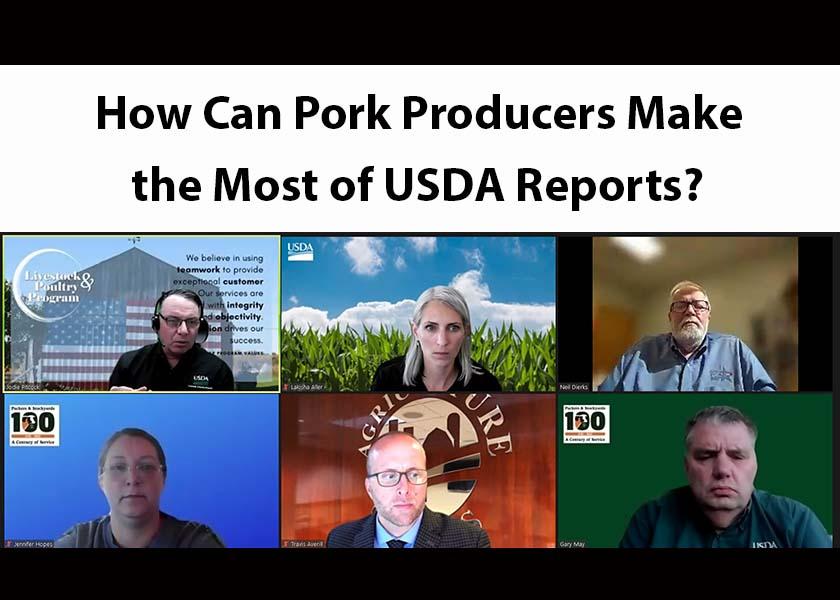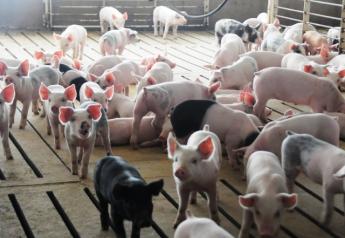How Can Pork Producers Make the Most of USDA Reports?

Neil Dierks, CEO of the National Pork Producers Council (NPPC), says his industry colleagues in other parts of the world often remind him how significant livestock mandatory reporting services are to the U.S. pork industry.
“Their industries don’t have anything like mandatory livestock reporting, and their industries oftentimes are flying in the dark,” Dierks says. “Our systems offer information for decisionmakers throughout our industry.”
That’s one of the reasons why NPPC believes Livestock Market News staff should be deemed essential workers.
“We want to avoid shutdowns,” Dierks says. “In fact, one of the things we're asking for in this reauthorization is that our Livestock Market News people are deemed essential during a government shutdown to make sure that reporting continues.”
The data from reports such as the USDA Market News and the USDA Hogs and Pigs Report have become second nature to the industry and are used throughout the country for producers selling pigs, packers buying pigs, customers buying pork and packers and processers selling pork.
During the first of a three-part webinar series on Oct. 12 about USDA’s Livestock Mandatory Reporting and other market data and resources, experts shared how this information can inform real-world marketing decisions at the farm and other points in the supply chain.
So, how can producers use this information? Three experts explain how the following services can support the swine industry in making better decisions.
USDA National Agricultural Statistics Service (NASS)
“The data from the Quarterly Hogs and Pigs Report can be used directly or indirectly to help a producer by allowing them to make business decisions based off the volume of hogs that are currently out there in the U.S.,” says Travis Averill, chief – livestock branch with NASS.
NASS also releases the Meat Production Disposition and Income report at the end of April each year. The data on shipment numbers, death loss and the pig crop at the state level can be beneficial to hog producers.
He says producers can also use the Livestock Historical Track Records, which NASS typically releases mid-September, that shows how much USDA data changes over time. It allows producers to see the quality of the data, Averill adds.
“In addition to those reports, NASS has been releasing the Quarterly Hogs and Pigs Methodology and Quality Measures Report that lends insight into the data quality that is being provided from the producers and their responses on a quarterly basis by state level. I think that's very helpful for producers to see the impact it has and help them understand the importance of responding to NASS surveys,” he says. “The more data we receive from producers in collaboration also provides a stronger quality behind all the data and estimates on a state basis.”
Swine Contract Library
Producers can use the Swine Contract Library to investigate what contract terms packers offer.
“A producer could identify contract provisions of interest,” explains Jennifer Hopes, a marketing specialist and the Swine Contract Library Coordinator with the USDA Packers and Stockyards Division. “Producers would not know which packers are offering any of the provisions listed in the summarized information, nor would they know how a packer would combine those provisions in any contract.”
Still, Hopes says it is valuable to know those provisions exist in the marketplace.
“A producer can use that knowledge to negotiate what may result in a more favorable contract with a packer,” she says. “Producers may use the monthly report on swine contracted for future delivery in several ways. A producer may use this report to decide how many sows to breed. A producer may also use it to decide whether to contract with packers in regions where packers had fewer numbers of swine committed for delivery.”
USDA Agricultural Marketing Service’s Livestock Market News
“Market News’ mission is to provide timely, accurate and unbiased market information to customers like yourselves, to help you make more informed business decisions and to ultimately foster a more competitive marketplace,” says Lakisha Aller, assistant chief with the USDA Agricultural Marketing Service’s Livestock, Poultry and Grain Market News office.
Market News publishes about 1,000 different commodity reports each week, including the Livestock Mandatory Reporting Hogs and Pork, which provides producers with valuable market information on price trends, supply and demand, and various purchase and sales methods.
“Our role in the marketplace is to act as a mirror, in that we're supposed to reflect what's happening in the marketplace at one given moment in time,” Aller says. “We provide free, unbiased information and we leave the forecasting of projections to our sisters at the Office of the Chief Economist and the Economic Research Service as well as industry.”
Learn more here about upcoming webinars.
More from Farm Journal's PORK:
Heads Turn at a Bullish September Hogs and Pigs Report
Do Hog Producers Feel an Incentive to Expand?
Line Speed Issue Raises Ruckus at House Ag Committee Hearing







